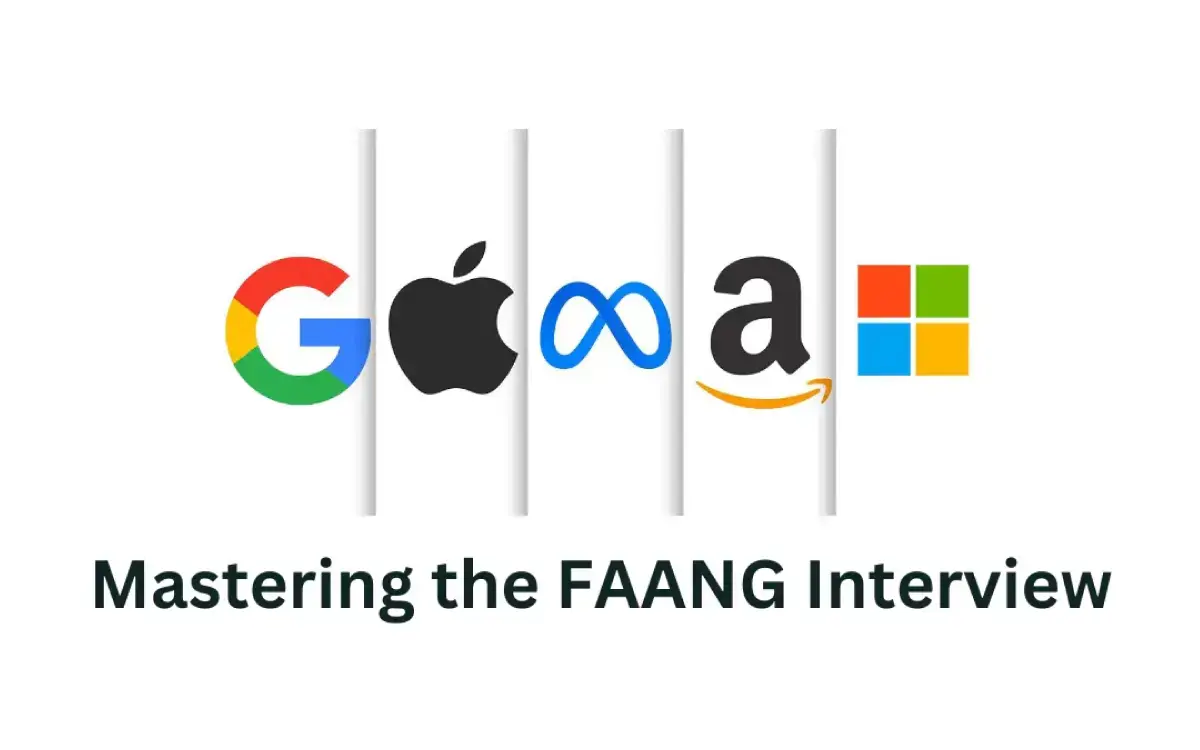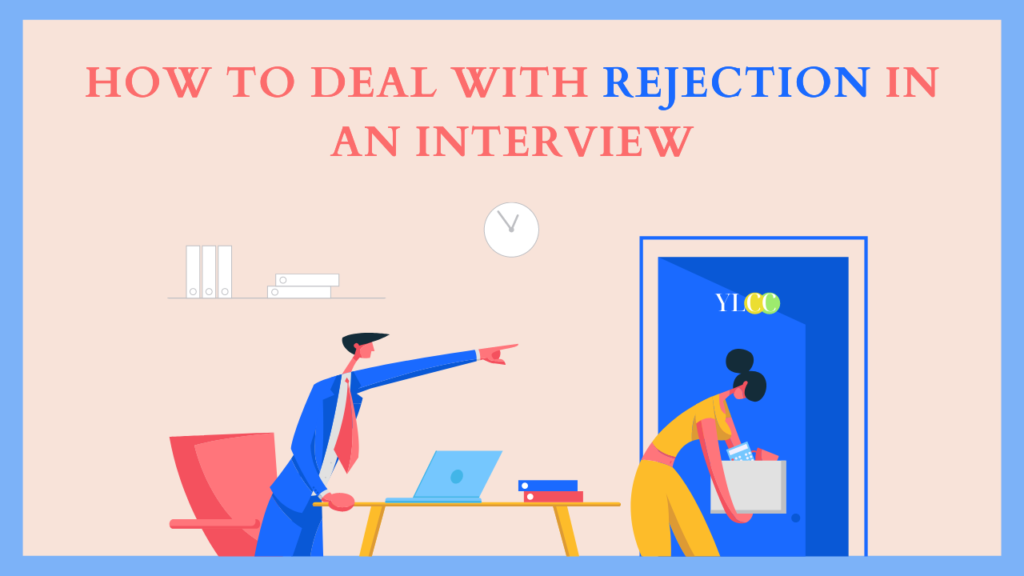1: Introduction: Why Bootcamp Prep Isn’t Enough
Coding bootcamps have exploded in popularity over the last decade, promising to take people from beginners to job-ready engineers in months. They’re intensive, structured, and outcome-driven , and for many, they open doors to junior roles at startups, mid-sized tech companies, and even the occasional big-name offer.
But when it comes to FAANG interviews , those notoriously rigorous rounds at Facebook (Meta), Amazon, Apple, Netflix, and Google , bootcamp prep often falls short. Bootcamps teach syntax, problem-solving patterns, and maybe even a crash course on system design. What they don’t teach is the hidden curriculum: the unspoken expectations, cultural signals, and subtle performance skills that separate candidates who make it through from those who fall just short.,
The Bootcamp-FAANG Gap
Here’s the reality: bootcamps equip candidates with technical skills, but FAANG interviews aren’t purely technical. Recruiters at these companies are looking for engineers who can:
- Think aloud and communicate clearly under pressure.
- Navigate ambiguous, open-ended questions.
- Demonstrate strong collaboration and adaptability.
- Tie their answers to measurable impact.
These aren’t skills you’ll find on a bootcamp syllabus. They’re rarely taught in classrooms or textbooks because they aren’t easy to standardize. But at FAANG, they’re non-negotiable.
In fact, as discussed in Interview Node’s guide “Why Software Engineers Keep Failing FAANG Interviews”, many candidates who have all the right technical prep still stumble because they overlook these “softer,” but equally crucial, dimensions of the process.
The Myth of “If You Can Code, You Can Pass”
Many bootcamp grads, and even self-taught engineers, approach FAANG interviews believing the hardest part is solving algorithmic problems. They grind LeetCode for months, master dynamic programming, and memorize system design templates.
But then they sit down for a real interview and hit roadblocks like:
- “Can you explain your trade-offs to a non-technical stakeholder?”
- “How would you adapt this system if the requirements suddenly changed?”
- “Tell me about a time you resolved a conflict with a teammate.”
These aren’t coding problems , they’re performance problems. And without practice in these areas, even brilliant engineers falter.
What Bootcamps Teach vs. What FAANG Expects
| Bootcamp Curriculum | FAANG Hidden Curriculum |
| Syntax and libraries | Communication under pressure |
| Standard LeetCode prep | Thinking aloud while coding |
| Portfolio projects | Trade-off analysis in real-world design |
| Basic behavioral prep | Impact-driven storytelling |
| Resume-focused coaching | Cultural alignment (Googleyness, Amazon LPs) |
This mismatch explains why so many strong candidates underperform in FAANG interviews. Bootcamps prepare you to code like an engineer, FAANG expects you to think, communicate, and lead like one.
The Hidden Curriculum: What It Really Means
The term “hidden curriculum” comes from education research. It refers to the unspoken lessons students absorb outside formal instruction , norms, behaviors, expectations. In FAANG interviews, the hidden curriculum includes:
- How to structure answers so interviewers can follow your thinking.
- How to remain calm and adaptable when faced with vague or changing requirements.
- How to frame past experiences in terms of impact, not activity.
- How to demonstrate alignment with company-specific values.
These are rarely taught but heavily evaluated. They often decide whether you walk away with an offer or a rejection.
Why This Matters Now More Than Ever
With competition for FAANG roles fiercer than ever, companies are raising the bar. It’s no longer enough to be technically sharp; you need to be well-rounded, resilient, and culturally aligned. The interview process reflects this shift.
The result? Candidates who prepare only the “visible curriculum” , coding, algorithms, and frameworks , risk being blindsided. Those who take the hidden curriculum seriously stand out as confident, adaptable, and ready to contribute beyond just writing code.
Key Takeaway
Bootcamps teach the fundamentals, but they don’t teach the hidden curriculum of FAANG interviews. To succeed, candidates must go beyond solving problems and learn to navigate ambiguity, communicate impact, and perform under pressure.
In the sections ahead, we’ll uncover these hidden lessons one by one, and show you how to train for them.
2: The Unspoken Expectations of FAANG Interviews
One of the most surprising realizations for bootcamp grads and even experienced engineers is that FAANG interviews are not purely about whether you can solve the problem. Yes, technical skill is essential, but recruiters and hiring managers are also measuring qualities that aren’t spelled out in the job description, qualities that reveal whether you’ll thrive in their environment.
These unspoken expectations are the backbone of the hidden curriculum. They’re rarely discussed in prep guides, yet they weigh heavily in hiring decisions.
2.1. Thinking Aloud
At FAANG companies, interviewers don’t just want the right answer, they want to see how you get there.
What they’re looking for:
- Do you break problems into clear steps?
- Can you explain your reasoning while coding?
- Do you handle dead ends gracefully and pivot logically?
Candidates who silently code and present a solution at the end leave interviewers guessing. Those who think aloud turn the interview into a collaborative session, giving interviewers confidence in their process, not just their output.
2.2. Collaboration Under Pressure
Interviews simulate high-pressure environments. Interviewers watch not only your problem-solving, but also your interpersonal style.
- Do you ask clarifying questions?
- Do you invite feedback while working through the problem?
- Do you respond constructively to hints or pushback?
These behaviors suggest how you’ll function on real teams. Collaboration is central at FAANG and failing to demonstrate it can overshadow even brilliant technical answers.
2.3. Adaptability to Ambiguity
FAANG interviewers are famous for asking open-ended, sometimes vague questions. That’s intentional. In real engineering, requirements are rarely clear-cut, and adaptability is critical.
Strong candidates:
- Seek clarification instead of making assumptions.
- State constraints explicitly.
- Revise their approach quickly when requirements change.
Bootcamp training often emphasizes neat, well-defined problems. But in FAANG interviews, success hinges on navigating ambiguity with structure.
2.4. Trade-Off Thinking
At startups, engineers are often judged on “getting things done.” At FAANG, interviewers expect you to discuss trade-offs.
- Which data structure is faster but more memory-intensive?
- How does your ML pipeline balance accuracy vs. latency?
- What happens if the dataset grows 10x?
Discussing trade-offs shows you think like a system-level engineer, not just a coder. Bootcamps rarely drill this skill, but it’s one of the clearest signals FAANG interviewers use to separate solid from standout candidates.
2.5. Confidence Without Arrogance
Confidence matters in interviews, but FAANG recruiters are trained to notice tone. They want candidates who are self-assured yet collaborative.
- Too little confidence: you appear unprepared.
- Too much: you risk being perceived as arrogant or uncoachable.
Striking the right balance comes from practice and feedback, exactly what mock interviews provide.
2.6. Impact-Driven Storytelling
In behavioral rounds, FAANG interviewers don’t want to hear about tasks; they want to hear about impact. Instead of:
- “I built a dashboard for model evaluation,”
they’re listening for: - “I built a dashboard that reduced evaluation time by 30% and helped the team ship models 2 weeks faster.”
Impact proves you understand the bigger picture and signals leadership potential.
Key Takeaway
The unspoken expectations at FAANG interviews go far beyond coding. Candidates are evaluated on how they think aloud, collaborate, adapt to ambiguity, discuss trade-offs, balance confidence, and communicate impact.
These aren’t on the bootcamp curriculum, but they’re central to the hidden curriculum that defines success. By practicing these skills intentionally, you’ll bridge the gap between being technically prepared and being interview ready.
3: The Importance of Storytelling in Behavioral Rounds
When candidates hear the phrase “behavioral interview,” many dismiss it as the easy part of the process. After all, what could be harder than coding complex algorithms or designing large-scale ML systems? But for FAANG interviews, behavioral rounds are far from filler. They’re a core part of the evaluation , and often the deciding factor when technical skills are equal.
This is where the hidden curriculum kicks in hardest. Bootcamps might spend a session or two on “soft skills” and introduce the STAR method (Situation, Task, Action, Result). But FAANG interviewers expect more: they’re looking for impact-driven storytelling that demonstrates leadership, resilience, and cultural alignment.
3.1. Why Behavioral Rounds Matter at FAANG
FAANG companies hire engineers not just to code, but to:
- Work across cross-functional teams.
- Influence decisions in high-stakes environments.
- Navigate setbacks, ambiguity, and rapid change.
- Demonstrate leadership even without titles.
Behavioral rounds are where recruiters answer critical questions like:
- “Would I trust this person in a high-pressure product launch?”
- “Would this engineer lift or drag down a team?”
- “Does this candidate embody our values?”
Strong storytelling convinces them you’re more than a coder , you’re a future leader.
3.2. Why the STAR Method Alone Isn’t Enough
Bootcamps often teach candidates to frame answers with STAR:
- Situation: What was happening?
- Task: What was your responsibility?
- Action: What did you do?
- Result: What was the outcome?
While STAR is a good foundation, it often produces generic, task-focused answers. For example:
- “In my last project, our model was underperforming. I ran hyperparameter tuning, which improved accuracy. The result was a better-performing model.”
This answer is structured, but flat. It lacks impact, the bigger “so what” that FAANG recruiters want to hear.
3.3. Shifting From Activity to Impact
To stand out, you need to shift from describing activities to demonstrating impact. Consider the improved version of the above:
- “In my last project, our recommendation system underperformed by 10%. I redesigned the feature pipeline and introduced automated tuning. This improved accuracy by 15%, which increased user engagement by 8% and directly contributed to a $2M revenue lift in Q4.”
See the difference? The first version shows you can code. The second shows you can create measurable business impact, exactly what FAANG interviewers are listening for.
3.4. The Role of Storytelling in Demonstrating Leadership
Storytelling is not about embellishment, it’s about clarity. A strong story demonstrates that you:
- Identify critical problems.
- Drive solutions proactively.
- Rally teams and collaborate effectively.
- Deliver results that matter at scale.
Even junior engineers can demonstrate leadership through storytelling. For example:
- “As the newest engineer, I noticed our deployment pipeline lacked monitoring. I proposed a fix, built a proof of concept, and collaborated with DevOps to deploy it. This reduced production incidents by 40% over the next quarter.”
You don’t need a management title to show leadership; you just need stories where you took initiative and made an impact.
3.5. Practicing Impact-Driven Storytelling in Mocks
Like technical skills, storytelling improves with practice. Mock behavioral interviews help you refine your delivery by:
- Cutting down rambling.
- Highlighting measurable results.
- Testing whether your story is memorable and clear.
- Receiving feedback on tone and authenticity.
Check out Interview Node’s guide on “Cracking the FAANG Behavioral Interview: Top Questions and How to Ace Them” emphasize that behavioral prep should be as rigorous as technical prep.
3.6. Common Mistakes in Behavioral Storytelling
Candidates often stumble in predictable ways:
- Task-focused answers: Describing what they did but not why it mattered.
- Overly technical: Forgetting the audience might be non-technical.
- Rambling: Taking too long to get to the result.
- Vague results: “We improved performance” without numbers or specifics.
FAANG interviewers are trained to cut through fluff. Weak stories stand out quickly.
Key Takeaway
Behavioral rounds at FAANG aren’t about personality quizzes, they’re about evidence of impact. The hidden curriculum here is the art of storytelling: using STAR as a base, but layering in clarity, leadership, and measurable outcomes.
Bootcamps teach you how to code. To land FAANG offers, you must also learn how to tell stories that prove you deliver results.
4: Navigating Ambiguity: What FAANG Interviewers Really Test
If there’s one element of FAANG interviews that rattles even the most well-prepared bootcamp grads, it’s ambiguity. Unlike the neat, well-scoped problems you might see in a coding bootcamp or a LeetCode practice session, FAANG interview questions are often intentionally vague.
It’s not laziness , it’s design. These companies want to test whether you can thrive in the real world of engineering, where requirements are unclear, stakeholders change priorities, and the “right answer” often depends on context.
4.1. Why Ambiguity Is Built into the Process
Engineering at scale means building for uncertainty. When you’re designing a recommendation pipeline for billions of users, no problem statement comes neatly packaged. FAANG interviewers replicate this by asking questions like:
- “Design a system to recommend friends.”
- “How would you evaluate the output of a chatbot?”
- “What would you do if the data is missing or incomplete?”
Notice how open-ended these are. There’s no single solution. Instead, interviewers want to see:
- How you structure messy problems.
- How you ask clarifying questions.
- Whether you can make reasonable assumptions.
4.2. What Interviewers Are Really Testing
Ambiguous questions aren’t traps; they’re windows into your thinking. Specifically, interviewers are testing:
- Clarification: Do you pause and ask, “What are the constraints?” or “What scale are we designing for?”
- Prioritization: Can you identify the most critical requirements before diving into details?
- Flexibility: When requirements change mid-problem, do you panic , or adapt?
- Communication: Can you articulate assumptions clearly so interviewers can follow your logic?
These behaviors reveal whether you’re not just a problem-solver, but a system-level thinker.
4.3. The Bootcamp Blind Spot
Most bootcamp exercises are well-scoped. You’re given a dataset, a clear objective, and a set of tools to apply. For example: “Build a sentiment classifier using this dataset.”
But in FAANG interviews, the dataset might be incomplete, the objective vague, and the tools unspecified. Candidates trained only on clean, structured problems often freeze because they’ve never practiced structuring ambiguity.
This mismatch is a central part of the hidden curriculum.
4.4. How Strong Candidates Handle Ambiguity
Here’s what strong candidates do in these situations:
- Ask clarifying questions: “Are we designing this for millions of users or billions?”
- State assumptions: “For now, I’ll assume we’re working with structured logs; we can revisit if it’s unstructured.”
- Outline first, then dive: High-level plan → subcomponents → detailed design.
- Revisit trade-offs: “If latency is more important than accuracy, we’d choose X. If accuracy is the priority, Y.”
- Stay calm under curveballs: When requirements shift mid-question, they pivot gracefully.
These behaviors demonstrate the maturity FAANG companies are hiring for.
4.5. Practicing Ambiguity in Mocks
You can train for ambiguity just like coding. In mock interviews:
- Ask your peer to give you vague prompts.
- Practice clarifying questions first before diving in.
- Time-box your answers to build discipline under pressure.
- Record yourself to see if your assumptions are clear and logical.
The more you expose yourself to ambiguous scenarios, the more natural it becomes to navigate them.
4.6. Common Mistakes with Ambiguity
- Jumping straight to coding: Candidates skip clarifications and start solving the wrong problem.
- Over-engineering: Spending too long on edge cases before defining the basics.
- Freezing: Panicking when requirements shift mid-question.
- Not verbalizing assumptions: Leaving interviewers guessing about your thought process.
Avoiding these mistakes is less about knowledge and more about mindset and practice.
Key Takeaway
Ambiguity isn’t a trick, it’s the essence of FAANG interviews. The hidden curriculum here is learning to structure the unstructured: clarifying, prioritizing, making assumptions, and adapting gracefully.
Bootcamps teach you how to solve problems. FAANG expects you to show you can define problems when they aren’t clear.
5: The Role of Soft Skills in Technical Rounds
When candidates picture a “technical interview,” they imagine whiteboards full of algorithms or system diagrams sprawling across a page. And yes, those elements matter. But at FAANG interviews, technical rounds don’t exist in isolation from soft skills. In fact, how you communicate and collaborate during these sessions can matter just as much as whether your code compiles.
This is part of the hidden curriculum: FAANG interviewers aren’t just grading your solution, they’re evaluating the way you arrive there.
5.1. Asking Clarifying Questions
Many bootcamp grads jump straight into solving the problem as soon as it’s presented. But strong candidates pause to clarify. For example:
- “What’s the expected input size?”
- “Are there latency requirements?”
- “Should I optimize for readability or raw performance?”
These questions show maturity. They prove you don’t blindly code; you engineer with context. Interviewers view clarifying questions as signs of thoughtfulness, not hesitation.
5.2. Explaining Thought Process Out Loud
Silence kills interviews. If you write code or sketch diagrams without narrating your reasoning, interviewers have no window into your brain.
Instead, top candidates:
- Talk through trade-offs while solving.
- State why they reject certain approaches.
- Highlight checkpoints: “At this stage, I’d test complexity before moving forward.”
This transforms the interview from a quiz into a collaboration.
5.3. Handling Pushback Gracefully
FAANG interviewers often challenge your assumptions mid-solution. They might ask:
- “What if the dataset doubles?”
- “Could you design this with less memory?”
- “Why not use a different approach?”
These curveballs aren’t traps. They’re opportunities to demonstrate adaptability. Candidates who respond defensively (“But that wasn’t in the question…”) raise red flags. Strong candidates treat pushback as a chance to refine, not resist.
5.4. Communicating Trade-Offs Clearly
Even in technical rounds, FAANG recruiters want engineers who think like architects. This means articulating trade-offs:
- Time vs. space complexity.
- Latency vs. accuracy in ML models.
- Development speed vs. maintainability.
Clear communication of trade-offs proves you understand engineering is about choices, not perfection.
5.5. Demonstrating Composure Under Pressure
Technical rounds are designed to be stressful. Interviewers want to see if you can stay composed when you don’t immediately know the answer. Panicking, freezing, or rambling undermines even strong technical knowledge.
Candidates who remain calm, ask clarifying questions, and iterate out loud demonstrate resilience, a soft skill that FAANG values as much as technical ability.
5.6. Why Bootcamps Miss This
Bootcamps train you to solve coding problems efficiently. They don’t always train you to solve them while being watched, interrupted, or evaluated for communication style. That’s why many technically strong bootcamp grads underperform in technical rounds.
To bridge this gap, mock interviews that simulate live collaboration and pushback are essential.
Key Takeaway
Soft skills aren’t reserved for behavioral interviews. In FAANG technical rounds, your ability to clarify, explain, handle pushback, and communicate trade-offs often determines whether interviewers see you as a teammate , not just a coder.
Bootcamps teach you algorithms. The hidden curriculum teaches you to engineer with empathy, clarity, and resilience under pressure.
6: The FAANG-Specific Lens: Culture and Values
Another layer of the hidden curriculum is one few bootcamps address directly: company culture. Every FAANG company has its own DNA , a set of values, principles, and expectations that influence how they evaluate candidates.
Failing to understand this lens can sink an otherwise strong interview. Passing isn’t just about being technically capable; it’s about showing you can thrive in their culture.
6.1. Amazon: Leadership Principles
Amazon interviews revolve heavily around their Leadership Principles (LPs). You’ll hear behavioral questions tied directly to them:
- “Tell me about a time you had to disagree and commit.”
- “How have you delivered results with limited resources?”
Candidates who don’t tailor their answers to LPs come across as generic. Those who weave LPs into stories demonstrate cultural alignment and stand out.
6.2. Google: “Googleyness”
At Google, technical skill is a baseline. What often tips the scale is “Googleyness” , traits like curiosity, collaboration, humility, and comfort with ambiguity.
For example, candidates who remain curious and flexible when challenged score higher than those who rigidly defend a single approach. Bootcamps don’t teach “Googleyness,” but interviewers expect to see it in action.
6.3. Meta: Impact and Speed
Meta (Facebook) emphasizes impact and moving fast. They want to see candidates who:
- Talk about measurable outcomes.
- Demonstrate scrappiness in solving problems.
- Show resilience in the face of failure.
When candidates frame stories around results at scale, they match Meta’s culture of speed and impact.
6.4. Apple: Craft and Detail
Apple’s culture values craftsmanship, detail, and user focus. Candidates who show meticulous attention to quality and user experience , not just functionality , align better with Apple’s lens.
Even in technical rounds, Apple interviewers may probe: “How would this decision affect the user?”
6.5. Netflix: Freedom and Responsibility
Netflix expects candidates to thrive in a culture of ownership. They want to see autonomy, accountability, and the ability to make tough calls without constant oversight.
Telling stories that show independence and responsibility resonates strongly here.
6.6. Why Bootcamps Miss This Layer
Bootcamps focus on coding and interview frameworks, not corporate culture. But FAANG recruiters weigh culture alignment heavily, because at scale, one bad fit can disrupt entire teams.
Check out Interview Node’s guide on “Unlocking FAANG Success: Key Coding Questions and Strategies” highlight not just technical preparation but also tailoring your delivery to each company’s cultural lens.
Key Takeaway
Every FAANG company evaluates candidates through its own cultural filter, whether it’s Amazon’s Leadership Principles, Googleyness, or Meta’s focus on impact. Bootcamps don’t teach you this, but the hidden curriculum does: to succeed, you must study the culture as deeply as the algorithms.
7: Common Blind Spots of Bootcamp Grads
Bootcamps are designed to get candidates job-ready in record time. They teach the fundamentals, provide portfolio-building projects, and sometimes even offer career services. But when it comes to FAANG interviews, many bootcamp grads still find themselves hitting a wall. Why? Because of a set of blind spots, areas bootcamps don’t fully prepare them for.
7.1. Over-Indexing on LeetCode
Most bootcamps hammer home algorithm practice, and with good reason. Coding rounds remain a key part of FAANG interviews. But many grads believe mastering LeetCode is the golden ticket.
The blind spot: interviewers aren’t just looking for correct code. They want structured problem-solving, communication, and trade-off analysis. Candidates who churn out answers without narrating reasoning often underperform.
7.2. Neglecting Behavioral Prep
Bootcamp grads often see behavioral rounds as “soft” or secondary. They rehearse a few generic STAR stories and move on.
But FAANG interviewers weigh behavioral performance heavily, because it reveals leadership potential, teamwork, and culture fit. Candidates who can’t articulate impact-driven stories appear unprepared, no matter how technically sharp they are.
7.3. Ignoring Ambiguity Training
As discussed earlier, FAANG interviewers love ambiguous problems. Bootcamp grads, used to well-scoped exercises, often freeze when requirements are vague. Without training in asking clarifying questions and structuring assumptions, they come across as rigid instead of adaptable.
7.4. Weak System Design Skills
Bootcamps focus on coding fundamentals but rarely cover system design at scale. Yet FAANG interviews, especially for mid-level and senior roles, emphasize designing large, distributed systems.
For ML and LLM engineers, this includes pipelines, monitoring, and evaluation. Without exposure to these concepts, bootcamp grads may look unprepared for anything beyond junior roles.
7.5. Failing to Demonstrate Business Impact
Bootcamps teach technical implementation, not business framing. But FAANG interviewers want candidates who can tie engineering work to outcomes.
For example:
- Weak framing: “I optimized the query to run faster.”
- Strong framing: “I optimized the query, cutting runtime by 50%, which allowed the team to deliver customer insights two days earlier and improved stakeholder satisfaction.”
Impact framing is a key piece of the hidden curriculum.
7.6. Overconfidence in “Hustle” Alone
Bootcamp grads are often praised for resilience and grit, and rightly so. But in FAANG interviews, hustle alone doesn’t stand in for structured thinking. Candidates who rush into problems without frameworks can appear scattered, no matter how motivated they are.
7.7. Underestimating Feedback Loops
Many grads do mock interviews but skip structured feedback. Without iteration, they repeat the same mistakes. Building deliberate feedback loops, from peers, mentors, or platforms, is essential to growth.
Key Takeaway
The blind spots of bootcamp grads aren’t about intelligence or work ethic. They’re about gaps in soft skills, system-level thinking, and impact framing. Bootcamps provide a strong foundation, but to succeed at FAANG, candidates must address these hidden areas.
By recognizing these blind spots early, you can shift your preparation strategy and avoid the pitfalls that derail many otherwise strong applicants.
8: How to Train for the Hidden Curriculum
The good news about the hidden curriculum is that, while bootcamps may not teach it, you can train for it deliberately. Just as algorithms and data structures require repetition, so do the unspoken skills FAANG interviewers value , thinking aloud, handling ambiguity, communicating impact, and aligning with culture.
Here’s how to build a training plan that strengthens these skills.
8.1. Incorporate Mock Interviews with Structure
Mock interviews are the best way to practice the hidden curriculum in real time. Unlike solo prep, mocks replicate the stress and unpredictability of a real interview. To maximize their value:
- Ask peers or mentors to role-play interviewers.
- Include technical and behavioral prompts.
- Enforce strict time limits.
- Always request structured feedback.
8.2. Practice Clarifying Questions and Trade-Offs
Ambiguity is a feature, not a bug, in FAANG interviews. You can train for it by:
- Starting every practice question with clarifications: “What’s the scale? What’s the latency requirement?”
- Building the habit of stating assumptions explicitly.
- Practicing trade-off discussions: “If memory is cheap but latency matters, I’d use X. If cost is the constraint, I’d use Y.”
These simple habits prove maturity under ambiguous conditions.
8.3. Refine Storytelling with Impact
Set aside time to rehearse behavioral answers out loud, not just in your head. Record yourself answering common prompts like:
- “Tell me about a failure.”
- “Describe a time you influenced without authority.”
- “What’s the most impactful project you’ve worked on?”
Then, improve each story by layering in numbers and outcomes. Bootcamps teach you to describe tasks; FAANG wants to hear how you moved the needle.
8.4. Study FAANG Cultures Deliberately
Amazon’s Leadership Principles. Googleyness. Meta’s focus on impact. Apple’s attention to craft. Netflix’s ownership culture. Each company evaluates through its own cultural lens.
You can train for this by:
- Reading company-specific interview prep guides.
- Reviewing official culture documents (Amazon LPs, Netflix Culture Memo, etc.).
- Tailoring mock behavioral answers to reflect those values.
Aligning your stories to each company’s lens is one of the clearest ways to show you’re not just prepared; you’re prepared for them.
8.5. Build Feedback Loops into Prep
Without feedback, you risk reinforcing bad habits. After every mock session, capture:
- 2 strengths.
- 2 weaknesses.
- 1 concrete action for improvement.
Over time, this creates a cycle of continuous improvement instead of repeated mistakes.
8.6. Leverage AI Tools for Repetition
AI-powered platforms can simulate coding rounds, generate behavioral prompts, and even provide feedback on pacing or clarity. While they don’t replace human practice, they’re excellent for building repetition into your prep schedule.
Pair AI-driven drills with peer sessions for a balance of volume and realism.
8.7. Treat It Like Training, Not Studying
The hidden curriculum is about performance. You can’t just read about it; you have to practice it under pressure. Treat your prep like an athlete training for competition: deliberate, consistent, and feedback driven.
Key Takeaway
You don’t have to accept the hidden curriculum as a mystery. By incorporating mocks, refining storytelling, practicing trade-offs, studying company cultures, and building feedback loops, you can train deliberately for the skills bootcamps don’t teach.
The difference between candidates who fail and those who land FAANG offers isn’t knowledge, it’s preparation for the unspoken rules.
9: Conclusion + FAQs
Conclusion: Mastering What Bootcamps Don’t Teach
FAANG interviews are often described as “tough”, but toughness isn’t just about algorithms or data structures. What makes them challenging is the hidden curriculum: the unspoken expectations around how you think, communicate, and demonstrate impact under pressure.
Bootcamps give you technical tools, but they rarely prepare you for:
- Thinking aloud and collaborating with an interviewer.
- Handling ambiguous, shifting requirements.
- Telling impact-driven stories instead of task-based ones.
- Aligning with company-specific cultural values.
These are the skills that separate candidates who get close from those who get offers.
The good news? The hidden curriculum isn’t unteachable. With structured mock interviews, impact-focused storytelling practice, cultural research, and deliberate feedback loops, you can train for these dimensions just as rigorously as algorithms.
Check out Interview Node’s guide on “FAANG ML Interview Crash Course: A Comprehensive Guide to Cracking the Machine Learning Dream Job”, success isn’t about cramming, it’s about holistic preparation across technical, behavioral, and cultural dimensions.
If you want to stand out at FAANG, don’t just master the visible curriculum. Master the hidden one too.
FAQs
1. What exactly is the “hidden curriculum” in FAANG interviews?
It refers to the unspoken expectations not listed in job descriptions , like communication, adaptability, impact-driven storytelling, and cultural alignment. These skills are often more decisive than technical correctness.
2. Why don’t bootcamps teach this hidden curriculum?
Bootcamps focus on tangible, teachable skills like coding and frameworks. Soft skills, ambiguity training, and company-specific culture are harder to standardize, but essential for FAANG roles.
3. Can strong coding skills alone get me into FAANG?
Rarely. Coding is the baseline, not the differentiator. FAANG companies expect candidates to also collaborate, clarify, adapt, and communicate clearly. Without these, even perfect code won’t save you.
4. How do I practice ambiguity handling?
Start mock interviews with vague prompts. Before solving, ask clarifying questions, state assumptions, and structure your approach. The goal is to demonstrate thoughtfulness, not jump straight to code.
5. How do I improve my behavioral interview answers?
Move beyond STAR to focus on impact. Use numbers, outcomes, and context: “I improved model accuracy by 12%, reducing churn by 5%, which saved $1M annually.” Practice storytelling out loud until it flows naturally.
6. Which FAANG company has the toughest cultural expectations?
It depends. Amazon interviews heavily on Leadership Principles. Google emphasizes “Googleyness” (curiosity, collaboration). Meta prioritizes speed and impact. None is harder; they’re just different lenses.
7. How do I tailor my prep to each FAANG company?
Study their cultural values, read interview guides, and adjust your behavioral stories to highlight alignment. For example, highlight ownership for Amazon, curiosity for Google, or measurable impact for Meta.
8. How do I show confidence without arrogance?
Communicate your reasoning clearly and stand by your solutions, but remain open to hints and feedback. Collaboration signals humility, while structured answers signal confidence.
9. Do mid- and senior-level candidates face more hidden curriculum tests?
Yes. At senior levels, interviews emphasize system design, leadership, and influence. How you drive alignment and navigate complexity often matters more than coding speed.
10. Can mock interviews really prepare me for the hidden curriculum?
Absolutely , if structured correctly. They replicate pressure, force you to think aloud, and give you feedback on communication, tone, and adaptability. Without mocks, blind spots often go unaddressed.
11. What’s the biggest mistake candidates make in FAANG interviews?
Focusing only on algorithms and ignoring soft skills. Many candidates can solve problems, but few can explain trade-offs, tell impactful stories, or adapt under ambiguity.
12. How much time should I dedicate to hidden curriculum prep vs. technical prep?
Think 70/30. Technical prep should still dominate, but at least 30% of your time should go into storytelling, mock behavioral rounds, and ambiguity drills.
13. Are these skills useful outside FAANG interviews?
Yes. The hidden curriculum, clear communication, adaptability, cultural awareness, are universal career accelerators. They’ll help you thrive in any high-performing team.
14. What role does feedback play in mastering the hidden curriculum?
Feedback is everything. Without it, you risk reinforcing bad habits (rambling, overconfidence, unclear trade-offs). After each mock, identify strengths, weaknesses, and one actionable improvement.
15. How do I know I’ve mastered the hidden curriculum?
When you can consistently:
- Structure ambiguous problems without panic.
- Deliver behavioral stories with measurable impact.
- Stay composed when challenged.
- Tailor answers to FAANG cultural lenses.
If these feel natural in mocks, you’re ready for the real thing.
Final Word
The hidden curriculum is what bootcamps don’t teach but FAANG expects you to know. If you ignore it, you risk blending into the sea of technically competent but unprepared candidates. If you master it, you stand out as someone who’s not just smart, but ready to perform, lead, and thrive at scale.
The candidates who succeed at FAANG aren’t necessarily the best coders. They’re the ones who prepare for the whole interview, both the visible and the hidden curriculum.






